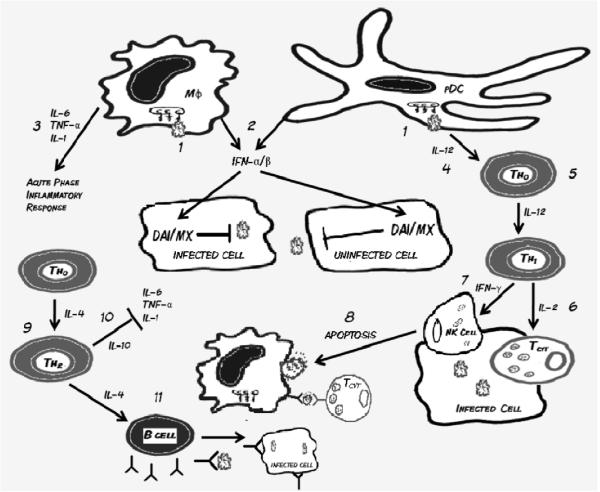Figure 2.
1) Respiratory viruses invade respiratory mucosal epithelial cells and residential innate immune cells, where they activate Toll-like receptors (TLR) and induce the innate immune response. 2) Activated macrophages (Mφ) and plasmacytoid dendritic cells (pDC) produce IFN-α/β, which prevents viral replication in host cells 3) Additionally, macrophages secrete pro-inflammatory cytokines (IL-6, TNF-α, and IL-1) which stimulate the acute phase inflammatory response. 4) Secretion of IL-12 by pDCs differentiates naïve Thelper (Th0) cells into 5) Th1 cells, which secrete IL-2 and IFN-γ. 6) IL-2 promotes maturation of Tcytotoxic cells, which recognize antigen presented through MHC 1 on infected cells, and promote apoptosis. 7) IFN-γ stimulates natural killer cells (NK) activity, also leading to increased apoptosis. 8) Apoptotic cells are phagocytized by Mφ, pDCs, and myeloid dendritic cells (mDCs) and the intracellular antigen is cross presented to Tcytotoxic cells. To counter-regulate the inflammatory Th1 response, naïve Th0 cells differentiate into 9) Th2 cells which secrete anti-inflammatory cytokines IL-10 and IL-4. 10) IL-10 down regulates the acute phase response, while IL-4 promotes differentiation of B cell into plasma and memory B lymphocytes. 11) Plasma B cells secrete antibodies, particularly IgA, which block viral entry and opsonize infected cells for antibody dependent cellular cytotoxicity.

